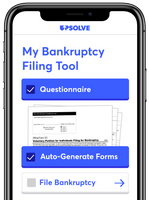B8-7-01, Mortgage Electronic Registration Systems (MERS), Inc. (05/01/2024)
Naming mers as the nominee for the beneficiary in the security instrument, requirements for the use of mers in specified geographic areas, mers registration, use of the min, mortgage assignment to mers, termination of mers.
A seller/servicer that wants to register a newly originated loan with MERS may prefer to designate MERS as the nominee for the beneficiary in the security instrument. Doing so, eliminates the need for a subsequent assignment of the security instrument should the seller/servicer sell (or transfer servicing of) the loan to another seller/servicer that is a member of MERS. In such cases, the applicable security instrument must be modified to:
show MERS as the nominee for the seller/servicer,
define and name the originating seller/servicer, and
obtain the borrower’s acknowledgment of MERS’ role in the mortgage transaction.
If the seller/servicer encounters a situation where Fannie Mae is the owner of record for a loan because the original assignment of the loan to Fannie Mae was recorded in the public records, the seller/servicer must correct the error before it completes the MERS registration by:
preparing an assignment of the loan from Fannie Mae to MERS,
sending the assignment to Fannie Mae for execution, and
recording the assignment in the public records.
Changes that must be made to create a standard MERS security instrument for each jurisdiction may be found in the Instructions document for each state-specific security instrument (see Fannie Mae's Legal Documents website), with the exception of loans secured by property located in certain geographic areas, as described below.
The seller/servicer is responsible for the accurate and timely preparation and recordation of the security instrument and any MERS-related documents required to be used in specific geographic areas. Sellers/servicers must also take all reasonable steps to ensure that information pertaining to MERS is updated and accurate at all times.
Even when MERS is named as the nominee for the beneficiary in the security instrument, it has no beneficial interest in the mortgage. All actions that MERS takes with respect to a loan are based on the instructions initiated by the originating seller, Fannie Mae, or the servicer. The originating seller remains responsible for all of its Contractual Obligations and any liability that it or Fannie Mae incurs as a result of the MERS registration, any MERS transaction, or the failure of MERS to perform any obligation with respect to a MERS-registered loan. In addition, the seller/servicer is solely responsible for any failure to comply with the provisions of its MERS Member Agreement, Rules, and Procedures.
In the states listed below, sellers/servicers must use the Mortgage Electronic Registration Systems, Inc. Rider (MERS Rider) ( Form 3158 ) when a newly originated loan will be registered with MERS. Sellers/servicers must also follow the Instructions to the MERS Rider and the applicable security instruments to make changes to the standard security instruments for the following states:
Oregon, and
Washington.
As the MERS Rider must be used in these specified states, post-closing assignments to MERS are prohibited.
MERS Assignment Form - Maine
In the state of Maine, sellers/servicers must use the MERS Mortgage Assignment (Form 3749) to assign loans to MERS at origination or post-closing, as applicable. Loans in which the Maine security instrument has been modified to name MERS as the original mortgagee of record, solely as nominee for the seller/servicer, are ineligible for delivery to Fannie Mae.
If a seller/servicer registers a loan on the MERS system before delivering it to Fannie Mae, the seller/servicer must ensure that the MIN is registered in MERS and names itself as the investor. Additionally, the seller/servicer must include the MIN in the delivery data. After Fannie Mae purchases or securitizes the mortgage, Fannie Mae notifies MERS to update its records to reflect Fannie Mae’s ownership interest in the loan.
Note : For loans registered in MERS iRegistration where MERS is not named as the nominee for the beneficiary in the security instrument, the MERS MIN should not be reported on the loan schedules, unless the loan is an eMortgage registered on MERS eRegistry.
If a seller/servicer registers a mortgage with MERS after Fannie Mae has purchased or securitized the loan, the seller/servicer must name Fannie Mae as the investor during registration and notify MERS of Fannie Mae’s ownership interest in the loan.
For each MERS-registered loan delivered to a document custodian, the seller/servicer must indicate the MIN on the security instrument and related documents. Because the status of a MERS-registered mortgage can change, the seller/servicer is not required to include the MIN on the note. Additionally, the seller/servicer is still responsible for making sure that the document custodian has sufficient information to determine whether a loan that is included in a subsequent transfer of servicing is registered with MERS at the time of the transfer. The seller/servicer must have adequate controls in its processes to enable it to readily identify MERS-registered mortgages.
The seller/servicer can choose from the following options:
place the MIN on the note when the loan is registered with MERS and, if the MERS registration is subsequently terminated for any reason, notify the document custodian to delete the MIN from the note;
wait to advise the custodian of the status of the MERS registration for a loan until a change in status actually occurs; or
notify the custodian about the status of the MERS registration for a loan at the time of a servicing transfer by providing the custodian with a listing of all MERS-registered loans that are included in the transfer and a certification that any and all other loans included in the transfer are not currently registered with MERS. (The listing may be prepared by the seller/servicer or, with the seller/servicer’s authorization, by MERS.) If there are more MERS-registered loans included in the transfer than there are unregistered loans, the listing may instead identify the unregistered loans—and, in that case, the certification should state that any and all other loans included in the transfer are currently registered with MERS.
If the originating seller/servicer is the beneficiary for a loan that it registers with MERS, they must prepare an assignment of the mortgage to MERS. Refer to the section above, entitled Requirements for the Use of MERS in Specified Geographic Areas , for additional information about, and restrictions on, assignments of loans to MERS.
By delivering a MERS-registered loan to Fannie Mae, the seller/servicer:
warrants that MERS is the mortgagee of record (either by being named as an assignee in a recorded assignment of the security instrument or as nominee for the beneficiary in the security instrument); and
warrants that the MIN is valid and properly registered in MERS naming the seller/servicer as the investor.
Sellers/servicers are not required to include a copy of the assignment of the loan to MERS in the delivery package they submit to the applicable document custodian.
If the seller/servicer decides to discontinue the use of MERS, they must request from MERS that the loan be “deactivated” in MERS. MERS will notify Fannie Mae about the deactivation of any loan in which it has an interest.
If the seller/servicer’s membership in MERS is terminated, the seller/servicer must promptly notify Fannie Mae’s MERS Program Office (see E-1-02, List of Contacts E-1-02, List of Contacts ).
In the event that either its membership in MERS or the MERS registration for an active loan is terminated for any reason while Fannie Mae has an ownership interest in the loan, the seller/servicer must perform the functions outlined in the following table for each MERS-registered loan that it is servicing for Fannie Mae.
| ✓ | The seller/servicer must... |
|---|---|
| Prepare an assignment of the loan from MERS to itself. | |
| Have the assignment executed. | |
| Record the executed assignment in the public land records. | |
| Provide the impacted Fannie Mae loan numbers to Fannie Mae’s MERS Program Office. |
The table below provides references to recently issued Announcements that are related to this topic.
| Announcements | Issue Date |
|---|---|
| May 01, 2024 | |
| December 13, 2023 | |
| May 04, 2022 | |
| March 06, 2019 |


Have questions?
Get answers to your policy and guide questions, straight from the source.
Work with Fannie Mae
- Customer Login
- Password Reset
- Not a customer? Get Started
Products & Solutions
- Mortgage Products & Options
- Technology Apps & Solutions
Support & Resources
- Customer Service
- News & Events
- Learning Center
- Guide Forms
Other Sites
- The Marketing Center
- Fannie Mae's Consumer Website
- Duty to Serve
Originating & Underwriting
Selling Guide

Download PDF Guide
(Published: June 05 2024)
Selling Questions? Ask Poli
Get answers to Guide & policy questions with Fannie Mae's AI-powered search tool.
Guide Resources
Forms, announcements, lender letters, legal documents, and more.
Browse the Guide
- Copyright and Preface
- A1-1-01, Application and Approval of Seller/Servicer
- A2-1-01, Contractual Obligations for Sellers/Servicers
- A2-1-02, Nature of Mortgage Transaction
- A2-1-03, Indemnification for Losses
- A2-2-01, Representations and Warranties Overview
- A2-2-02, Delivery Information and Delivery-Option Specific Representations and Warranties
- A2-2-03, Document Warranties
- A2-2-04, Limited Waiver and Enforcement Relief of Representations and Warranties
- A2-2-05, Invalidation of Limited Waiver of Representations and Warranties
- A2-2-06, Representations and Warranties on Property Value
- A2-2-07, Life-of-Loan Representations and Warranties
- A2-3.1-01, Lender Breach of Contract
- A2-3.1-02, Sanctions, Suspensions, and Terminations
- A2-3.2-01, Loan Repurchases and Make Whole Payments Requested by Fannie Mae
- A2-3.2-02, Enforcement Relief for Breaches of Certain Representations and Warranties Related to Underwriting and Eligibility
- A2-3.2-03, Remedies Framework
- A2-3.3-01, Compensatory Fees
- A2-4.1-01, Establishing Loan Files
- A2-4.1-02, Ownership and Retention of Loan Files and Records
- A2-4.1-03, Electronic Records, Signatures, and Transactions
- A2-4.1-04, Notarization Standards
- A2-5-01, Fannie Mae Trade Name and Trademarks
- A3-1-01, Fannie Mae’s Technology Products
- A3-2-01, Compliance With Laws
- A3-2-02, Responsible Lending Practices
- A3-3-01, Outsourcing of Mortgage Processing and Third-Party Originations
- A3-3-02, Concurrent Servicing Transfers
- A3-3-03, Other Servicing Arrangements
- A3-3-04, Document Custodians
- A3-3-05, Custody of Mortgage Documents
- A3-4-01, Confidentiality of Information
- A3-4-02, Data Quality and Integrity
- A3-4-03, Preventing, Detecting, and Reporting Mortgage Fraud
- A3-5-01, Fidelity Bond and Errors and Omissions Coverage Provisions
- A3-5-02, Fidelity Bond Policy Requirements
- A3-5-03, Errors and Omissions Policy Requirements
- A3-5-04, Reporting Fidelity Bond and Errors and Omissions Events
- A4-1-01, Maintaining Seller/Servicer Eligibility
- A4-1-02, Submission of Financial Statements and Reports
- A4-1-03, Report of Changes in the Seller/Servicer’s Organization
- A4-1-04, Submission of Irrevocable Limited Powers of Attorney
- B1-1-01, Contents of the Application Package
- B1-1-02, Blanket Authorization Form
- B1-1-03, Allowable Age of Credit Documents and Federal Income Tax Returns
- B2-1.1-01, Occupancy Types
- B2-1.2-01, Loan-to-Value (LTV) Ratios
- B2-1.2-02, Combined Loan-to-Value (CLTV) Ratios
- B2-1.2-03, Home Equity Combined Loan-to-Value (HCLTV) Ratios
- B2-1.2-04, Subordinate Financing
- B2-1.3-01, Purchase Transactions
- B2-1.3-02, Limited Cash-Out Refinance Transactions
- B2-1.3-03, Cash-Out Refinance Transactions
- B2-1.3-04, Prohibited Refinancing Practices
- B2-1.3-05, Payoff of Installment Land Contract Requirements
- B2-1.4-01, Fixed-Rate Loans
- B2-1.4-02, Adjustable-Rate Mortgages (ARMs)
- B2-1.4-03, Convertible ARMs
- B2-1.4-04, Temporary Interest Rate Buydowns
- B2-1.5-01, Loan Limits
- B2-1.5-02, Loan Eligibility
- B2-1.5-03, Legal Requirements
- B2-1.5-04, Escrow Accounts
- B2-1.5-05, Principal Curtailments
- B2-2-01, General Borrower Eligibility Requirements
- B2-2-02, Non–U.S. Citizen Borrower Eligibility Requirements
- B2-2-03, Multiple Financed Properties for the Same Borrower
- B2-2-04, Guarantors, Co-Signers, or Non-Occupant Borrowers on the Subject Transaction
- B2-2-05, Inter Vivos Revocable Trusts
- B2-2-06, Homeownership Education and Housing Counseling
- B2-2-07, First-Generation Homebuyer Loans
- B2-3-01, General Property Eligibility
- B2-3-02, Special Property Eligibility and Underwriting Considerations: Factory-Built Housing
- B2-3-03, Special Property Eligibility and Underwriting Considerations: Leasehold Estates
- B2-3-04, Special Property Eligibility Considerations
- B2-3-05, Properties Affected by a Disaster
- B3-1-01, Comprehensive Risk Assessment
- B3-2-01, General Information on DU
- B3-2-02, DU Validation Service
- B3-2-03, Risk Factors Evaluated by DU
- B3-2-04, DU Documentation Requirements
- B3-2-05, Approve/Eligible Recommendations
- B3-2-06, Approve/Ineligible Recommendations
- B3-2-07, Refer with Caution Recommendations
- B3-2-08, Out of Scope Recommendations
- B3-2-09, Erroneous Credit Report Data
- B3-2-10, Accuracy of DU Data, DU Tolerances, and Errors in the Credit Report
- B3-2-11, DU Underwriting Findings Report
- B3-3.1-01, General Income Information
- B3-3.1-02, Standards for Employment Documentation
- B3-3.1-03, Base Pay (Salary or Hourly), Bonus, and Overtime Income
- B3-3.1-04, Commission Income
- B3-3.1-05, Secondary Employment Income (Second Job and Multiple Jobs) and Seasonal Income
- B3-3.1-06, Requirements and Uses of IRS IVES Request for Transcript of Tax Return Form 4506-C
- B3-3.1-07, Verbal Verification of Employment
- B3-3.1-08, Rental Income
- B3-3.1-09, Other Sources of Income
- B3-3.1-10, Income Calculator
- B3-3.2-01, Underwriting Factors and Documentation for a Self-Employed Borrower
- B3-3.2-02, Business Structures
- B3-3.2-03, IRS Forms Quick Reference
- B3-3.3-01, General Information on Analyzing Individual Tax Returns
- B3-3.3-02, Income Reported on IRS Form 1040
- B3-3.3-03, Income or Loss Reported on IRS Form 1040, Schedule C
- B3-3.3-04, Income or Loss Reported on IRS Form 1040, Schedule D
- B3-3.3-05, Income or Loss Reported on IRS Form 1040, Schedule E
- B3-3.3-06, Income or Loss Reported on IRS Form 1040, Schedule F
- B3-3.3-07, Income or Loss Reported on IRS Form 1065 or IRS Form 1120S, Schedule K-1
- B3-3.4-01, Analyzing Partnership Returns for a Partnership or LLC
- B3-3.4-02, Analyzing Returns for an S Corporation
- B3-3.4-03, Analyzing Returns for a Corporation
- B3-3.4-04, Analyzing Profit and Loss Statements
- B3-3.5-01, Income and Employment Documentation for DU
- B3-3.5-02, Income from Rental Property in DU
- B3-4.1-01, Minimum Reserve Requirements
- B3-4.1-02, Interested Party Contributions (IPCs)
- B3-4.1-03, Types of Interested Party Contributions (IPCs)
- B3-4.1-04, Virtual Currency
- B3-4.2-01, Verification of Deposits and Assets
- B3-4.2-02, Depository Accounts
- B3-4.2-03, Individual Development Accounts
- B3-4.2-04, Pooled Savings (Community Savings Funds)
- B3-4.2-05, Foreign Assets
- B3-4.3-01, Stocks, Stock Options, Bonds, and Mutual Funds
- B3-4.3-02, Trust Accounts
- B3-4.3-03, Retirement Accounts
- B3-4.3-04, Personal Gifts
- B3-4.3-05, Gifts of Equity
- B3-4.3-06, Grants and Lender Contributions
- B3-4.3-07, Disaster Relief Grants or Loans
- B3-4.3-08, Employer Assistance
- B3-4.3-09, Earnest Money Deposit
- B3-4.3-10, Anticipated Sales Proceeds
- B3-4.3-11, Trade Equity
- B3-4.3-12, Rent Credit for Option to Purchase
- B3-4.3-13, Sweat Equity
- B3-4.3-14, Bridge/Swing Loans
- B3-4.3-15, Borrowed Funds Secured by an Asset
- B3-4.3-16, Credit Card Financing and Reward Points
- B3-4.3-17, Personal Unsecured Loans
- B3-4.3-18, Sale of Personal Assets
- B3-4.3-19, Cash Value of Life Insurance
- B3-4.3-20, Anticipated Savings and Cash-on-Hand
- B3-4.3-21, Borrower's Earned Real Estate Commission
- B3-4.4-01, DU Asset Verification
- B3-4.4-02, Requirements for Certain Assets in DU
- B3-5.1-01, General Requirements for Credit Scores
- B3-5.1-02, Determining the Credit Score for a Mortgage Loan
- B3-5.2-01, Requirements for Credit Reports
- B3-5.2-02, Types of Credit Reports
- B3-5.2-03, Accuracy of Credit Information in a Credit Report
- B3-5.3-01, Number and Age of Accounts
- B3-5.3-02, Payment History
- B3-5.3-03, Previous Mortgage Payment History
- B3-5.3-04, Inquiries: Recent Attempts to Obtain New Credit
- B3-5.3-05, Credit Utilization
- B3-5.3-06, Authorized Users of Credit
- B3-5.3-07, Significant Derogatory Credit Events — Waiting Periods and Re-establishing Credit
- B3-5.3-08, Extenuating Circumstances for Derogatory Credit
- B3-5.3-09, DU Credit Report Analysis
- B3-5.4-01, Eligibility Requirements for Loans with Nontraditional Credit
- B3-5.4-02, Number and Types of Nontraditional Credit References
- B3-5.4-03, Documentation and Assessment of a Nontraditional Credit History
- B3-6-01, General Information on Liabilities
- B3-6-02, Debt-to-Income Ratios
- B3-6-03, Monthly Housing Expense for the Subject Property
- B3-6-04, Qualifying Payment Requirements
- B3-6-05, Monthly Debt Obligations
- B3-6-06, Qualifying Impact of Other Real Estate Owned
- B3-6-07, Debts Paid Off At or Prior to Closing
- B3-6-08, DU: Requirements for Liability Assessment
- B4-1.1-01, Definition of Market Value
- B4-1.1-02, Lender Responsibilities
- B4-1.1-03, Appraiser Selection Criteria
- B4-1.1-04, Unacceptable Appraisal Practices
- B4-1.1-05, Disclosure of Information to Appraisers
- B4-1.1-06, Uniform Appraisal Dataset (UAD) and the Uniform Collateral Data Portal (UCDP)
- B4-1.2-01, Appraisal Report Forms and Exhibits
- B4-1.2-02, Desktop Appraisals
- B4-1.2-03, Hybrid Appraisals
- B4-1.2-04, Appraisal Age and Use Requirements
- B4-1.2-05, Requirements for Verifying Completion and Postponed Improvements
- B4-1.3-01, Review of the Appraisal Report
- B4-1.3-02, Subject and Contract Sections of the Appraisal Report
- B4-1.3-03, Neighborhood Section of the Appraisal Report
- B4-1.3-04, Site Section of the Appraisal Report
- B4-1.3-05, Improvements Section of the Appraisal Report
- B4-1.3-06, Property Condition and Quality of Construction of the Improvements
- B4-1.3-07, Sales Comparison Approach Section of the Appraisal Report
- B4-1.3-08, Comparable Sales
- B4-1.3-09, Adjustments to Comparable Sales
- B4-1.3-10, Cost and Income Approach to Value
- B4-1.3-11, Valuation Analysis and Reconciliation
- B4-1.3-12, Appraisal Quality Matters
- B4-1.4-01, Factory-Built Housing: Manufactured Housing
- B4-1.4-02, Factory-Built Housing: Modular, Prefabricated, Panelized, or Sectional Housing
- B4-1.4-03, Condo Appraisal Requirements
- B4-1.4-04, Co-op Appraisal Requirements
- B4-1.4-05, Leasehold Interests Appraisal Requirements
- B4-1.4-06, Community Land Trust Appraisal Requirements
- B4-1.4-07, Mixed-Use Property Appraisal Requirements
- B4-1.4-08, Environmental Hazards Appraisal Requirements
- B4-1.4-09, Special Assessment or Community Facilities Districts Appraisal Requirements
- B4-1.4-10, Value Acceptance (Appraisal Waiver)
- B4-1.4-11, Value Acceptance + Property Data
- B4-2.1-01, General Information on Project Standards
- B4-2.1-02, Waiver of Project Review
- B4-2.1-03, Ineligible Projects
- B4-2.1-04, Environmental Hazard Assessments
- B4-2.1-05, Unacceptable Environmental Hazards
- B4-2.1-06, Remedial Actions for Environmental Hazard Assessments Below Standards
- B4-2.2-01, Limited Review Process
- B4-2.2-02, Full Review Process
- B4-2.2-03, Full Review: Additional Eligibility Requirements for Units in New and Newly Converted Condo Projects
- B4-2.2-04, Geographic-Specific Condo Project Considerations
- B4-2.2-05, FHA-Approved Condo Review Eligibility
- B4-2.2-06, Project Eligibility Review Service (PERS)
- B4-2.2-07, Projects with Special Considerations and Project Eligibility Waivers
- B4-2.3-01, Eligibility Requirements for Units in PUD Projects
- B4-2.3-02, Co-op Project Eligibility
- B4-2.3-03, Legal Requirements for Co-op Projects
- B4-2.3-04, Loan Eligibility for Co-op Share Loans
- B4-2.3-05, Geographic-Specific Co-op Project Considerations
- B5-1-01, High-Balance Mortgage Loan Eligibility and Underwriting
- B5-1-02, High-Balance Pricing, Mortgage Insurance, Special Feature Codes, and Delivery Limitations
- B5-2-01, Manufactured Housing
- B5-2-02, Manufactured Housing Loan Eligibility
- B5-2-03, Manufactured Housing Underwriting Requirements
- B5-2-04, Manufactured Housing Pricing, Mortgage Insurance, and Loan Delivery Requirements
- B5-2-05, Manufactured Housing Legal Considerations
- B5-3.1-01, Conversion of Construction-to-Permanent Financing: Overview
- B5-3.1-02, Conversion of Construction-to-Permanent Financing: Single-Closing Transactions
- B5-3.1-03, Conversion of Construction-to-Permanent Financing: Two-Closing Transactions
- B5-3.2-01, HomeStyle Renovation Mortgages
- B5-3.2-02, HomeStyle Renovation Mortgages: Loan and Borrower Eligibility
- B5-3.2-03, HomeStyle Renovation Mortgages: Collateral Considerations
- B5-3.2-04, HomeStyle Renovation Mortgages: Costs and Escrow Accounts
- B5-3.2-05, HomeStyle Renovation Mortgages: Completion Certification
- B5-3.2-06, HomeStyle Renovation: Renovation Contract, Renovation Loan Agreement, and Lien Waiver
- B5-3.3-01, HomeStyle Energy for Improvements on Existing Properties
- B5-3.4-01, Property Assessed Clean Energy Loans
- B5-4.1-01, Texas Section 50(a)(6) Loans
- B5-4.1-02, Texas Section 50(a)(6) Loan Eligibility
- B5-4.1-03, Texas Section 50(a)(6) Loan Underwriting, Collateral, and Closing Considerations
- B5-4.1-04, Texas Section 50(a)(6) Loan Delivery and Servicing Considerations
- B5-4.2-01, Native American Conventional Lending Initiative (NACLI)
- B5-4.2-02, Disaster-Related Limited Cash-Out Refinance Flexibilities
- B5-4.2-03, Loans Secured by HomePath Properties
- B5-5.1-01, Community Seconds Loans
- B5-5.1-02, Community Seconds Loan Eligibility
- B5-5.1-03, Community Seconds: Shared Appreciation Transactions
- B5-5.2-01, Loans With Resale Restrictions: General Information
- B5-5.2-02, Loans with Resale Restrictions: Eligibility, Collateral and Delivery Requirements
- B5-5.3-01, Shared Equity Overview
- B5-5.3-02, Shared Equity Transactions: General Requirements
- B5-5.3-03, Shared Equity Transactions: Eligibility, Underwriting and Collateral Requirements
- B5-5.3-04, Massachusetts Resale Restriction Loan Eligibility Requirements
- B5-6-01, HomeReady Mortgage Loan and Borrower Eligibility
- B5-6-02, HomeReady Mortgage Underwriting Methods and Requirements
- B5-6-03, HomeReady Mortgage Loan Pricing, Mortgage Insurance, and Special Feature Codes
- B5-7-01, High LTV Refinance Loan and Borrower Eligibility
- B5-7-02, High LTV Refinance Underwriting, Documentation, and Collateral Requirements for the New Loan
- B5-7-03, High LTV Refinance Alternative Qualification Path
- B5-7-04, High LTV Refinance Representations and Warranties
- B5-7-05, High LTV Refinance Pricing, Mortgage Insurance, and Special Feature Codes
- B6-1-01, General Government Mortgage Loan Requirements
- B6-1-02, Eligible FHA-Insured Mortgage Loans
- B6-1-03, Eligible VA-Guaranteed Mortgages
- B6-1-04, Eligible HUD-Guaranteed Section 184 Mortgages
- B6-1-05, Eligible RD-Guaranteed Mortgages
- B7-1-01, Provision of Mortgage Insurance
- B7-1-02, Mortgage Insurance Coverage Requirements
- B7-1-03, Lender-Purchased Mortgage Insurance
- B7-1-04, Financed Borrower-Purchased Mortgage Insurance
- B7-1-05, Government Mortgage Loan Guaranty or Insurance
- B7-2-01, Provision of Title Insurance
- B7-2-02, Title Insurer Requirements
- B7-2-03, General Title Insurance Coverage
- B7-2-04, Special Title Insurance Coverage Considerations
- B7-2-05, Title Exceptions and Impediments
- B7-2-06, Attorney Title Opinion Letter Requirements
- B7-3-01, General Property Insurance Requirements for All Property Types
- B7-3-02, Property Insurance Requirements for One-to Four-Unit Properties
- B7-3-03, Master Property Insurance Requirements for Project Developments
- B7-3-04, Individual Property Insurance Requirements for a Unit in a Project Development
- B7-3-05, Additional Insurance Requirements
- B7-3-06, Flood Insurance Requirements for All Property Types
- B7-3-07, Evidence of Property Insurance
- B7-3-08, Mortgagee Clause, Named Insured, and Notice of Cancellation Requirements
- B7-4-01, General Liability Insurance Requirements for Project Developments
- B7-4-02, Fidelity/Crime Insurance Requirements for Project Developments
- B8-1-01, Publication of Legal Documents
- B8-2-01, Security Instruments for Conventional Mortgages
- B8-2-02, Special-Purpose Security Instruments
- B8-2-03, Signature Requirements for Security Instruments
- B8-3-01, Notes for Conventional Mortgages
- B8-3-02, Special Note Provisions and Language Requirements
- B8-3-03, Signature Requirements for Notes
- B8-3-04, Note Endorsement
- B8-4-01, Riders and Addenda
- B8-5-01, General Information on Special-Purpose Legal Documents
- B8-5-02, Inter Vivos Revocable Trust Mortgage Documentation and Signature Requirements
- B8-5-03, HomeStyle Renovation Mortgage Documentation Requirements
- B8-5-04, Sample Legal Documents
- B8-5-05, Requirements for Use of a Power of Attorney
- B8-6-01, Authorized Use of Intervening and Blanket Assignments
- B8-7-01, Mortgage Electronic Registration Systems (MERS), Inc.
- B8-8-01, General Information on eMortgages
- B8-8-02, Requirements for Creating, Closing, and Correcting eNotes
- C1-1-01, Execution Options
- C1-2-01, General Information on Delivering Loan Data and Documents
- C1-2-02, Loan Data and Documentation Delivery Requirements
- C1-2-03, Ownership of Mortgage Loans Prior to Purchase or Securitization and Third-Party Security Interests
- C1-2-04, Delivering eMortgages to Fannie Mae
- C1-2-05, Bailee Letters
- C1-3-01, General Information on Remittance Types
- C2-1.1-01, Mandatory Commitment Process
- C2-1.1-02, General Information about Mandatory Commitment Pricing and Fees
- C2-1.1-03, Mandatory Commitment Terms, Amounts, Periods and Other Requirements
- C2-1.1-04, Mandatory Commitment Extensions and Pair-Offs
- C2-1.1-05, Servicing Fees
- C2-1.1-06, Accrued Interest Payments for Regularly Amortizing Mortgages
- C2-1.1-07, Standard ARM and Converted ARM Resale Commitments
- C2-1.2-01, Best Efforts Commitment Process
- C2-1.2-02, Best Efforts Commitment Pricing, Periods, and Fees
- C2-1.2-03, Best Efforts Commitment Terms, Amounts, and Other Requirements
- C2-1.3-01, Servicing Marketplace
- C2-2-01, General Requirements for Good Delivery of Whole Loans
- C2-2-02, Documentation Requirements for Whole Loan Deliveries
- C2-2-03, General Information on Whole Loan Purchasing Policies
- C2-2-04, Timing of Distribution of Whole Loan Purchase Proceeds
- C2-2-05, Whole Loan Purchasing Process
- C2-2-06, Authorization to Transfer Funds
- C2-2-07, Purchase Payee Codes
- C3-1-01, General Information About Fannie Mae’s MBS Program
- C3-1-02, Preparing to Pool Loans into MBS
- C3-2-01, Determining Eligibility for Loans Pooled into MBS
- C3-2-02, Selecting a Servicing Option
- C3-2-03, MBS Remittance Type and Selecting a Remittance Cycle
- C3-2-04, Mandatory MBS Commitments
- C3-3-01, Determining and Remitting Guaranty Fees
- C3-3-02, Accessing Buyup and Buydown Ratios and Calculating Payments or Charges
- C3-3-03, Buying Up and Buying Down the Guaranty Fee for MBS
- C3-4-01, Term-Related Fixed-Rate Mortgage Pooling Parameters
- C3-5-01, Creating Weighted-Average ARM MBS
- C3-5-02, Calculating the Weighted-Average Pool Accrual Rates for ARM Flex Pools Using a Fixed MBS Margin
- C3-5-03, Calculating the Weighted-Average Pool Accrual Rates for ARM Flex Pools Using a Weighted-Average MBS Margin
- C3-5-04, Pooling ARMs with a Conversion Option
- C3-5-05, Commingling ARMs in MBS
- C3-6-01, Parameters for Pooling Loans Into Fannie Majors
- C3-7-01, Establishing an MBS Trading Account
- C3-7-02, Initiating an MBS Sale
- C3-7-03, Making Good Delivery
- C3-7-04, Delivering MBS Pool Data and Documents
- C3-7-05, Confirming Presettlement Information
- C3-7-06, Settling the Trade
- C3-7-07, Sale of Fannie Mae Securities to Third Parties
- D1-1-01, Lender Quality Control Programs, Plans, and Processes
- D1-1-02, Lender Quality Control Staffing and Outsourcing of the Quality Control Process
- D1-2-01, Lender Prefunding Quality Control Review Process
- D1-3-01, Lender Post-Closing Quality Control Review Process
- D1-3-02, Lender Post-Closing Quality Control Review of Approval Conditions, Underwriting Decisions, and Documentation
- D1-3-03, Lender Post-Closing Quality Control Review of Data Integrity
- D1-3-04, Lender Post-Closing Quality Control Review of Appraisers, Appraisals, Property Data Collectors, and Property Data Collection
- D1-3-05, Lender Post-Closing Quality Control Review of Closing Documents
- D1-3-06, Lender Post-Closing Quality Control Reporting, Record Retention, and Audit
- D2-1-01, General Information on Fannie Mae QC Reviews
- D2-1-02, Fannie Mae QC File Request and Submission Requirements
- D2-1-03, Outcomes of Fannie Mae QC Reviews
- D2-1-04, Identifying and Remedying Origination Defects Under the Remedies Framework
- E-1-01, References to Fannie Mae's Website
- E-1-02, List of Contacts
- E-1-03, List of Lender Contracts
- E-2-01, Required Custodial Documents
- E-2-02, Suggested Format for Phase I Environmental Hazard Assessments
- E-2-03, Revocable Trust Rider (Sample Language)
- E-2-04, Signature Requirements for Mortgages to Inter Vivos Revocable Trusts
- E-2-05, Servicing Marketplace — Mortgage Loan Servicing Purchase and Sale Agreement
- E-2-06, Correcting Errors in eNotes
- E-2-07, Description of eNote Header, Footer, and eNote Clause
- E-3-01, Acronyms and Glossary of Defined Terms: A
- E-3-02, Acronyms and Glossary of Defined Terms: B
- E-3-03, Acronyms and Glossary of Defined Terms: C
- E-3-04, Acronyms and Glossary of Defined Terms: D
- E-3-05, Acronyms and Glossary of Defined Terms: E
- E-3-06, Acronyms and Glossary of Defined Terms: F
- E-3-07, Acronyms and Glossary of Defined Terms: G
- E-3-08, Acronyms and Glossary of Defined Terms: H
- E-3-09, Acronyms and Glossary of Defined Terms: I
- E-3-10, Acronyms and Glossary of Defined Terms: J
- E-3-11, Acronyms and Glossary of Defined Terms: K
- E-3-12, Acronyms and Glossary of Defined Terms: L
- E-3-13, Acronyms and Glossary of Defined Terms: M
- E-3-14, Acronyms and Glossary of Defined Terms: N
- E-3-15, Acronyms and Glossary of Defined Terms: O
- E-3-16, Acronyms and Glossary of Defined Terms: P
- E-3-17, Acronyms and Glossary of Defined Terms: Q
- E-3-18, Acronyms and Glossary of Defined Terms: R
- E-3-19, Acronyms and Glossary of Defined Terms: S
- E-3-20, Acronyms and Glossary of Defined Terms: T
- E-3-21, Acronyms and Glossary of Defined Terms: U
- E-3-22, Acronyms and Glossary of Defined Terms: V
- E-3-23, Acronyms and Glossary of Defined Terms: W
- E-3-24, Acronyms and Glossary of Defined Terms: X
- E-3-25, Acronyms and Glossary of Defined Terms: Y
- E-3-26, Acronyms and Glossary of Defined Terms: Z
Please turn on JavaScript in your browser It appears your web browser is not using JavaScript. Without it, some pages won't work properly. Please adjust the settings in your browser to make sure JavaScript is turned on.
Mortgage electronic registration system (mers), explained.

Do you know who owns your mortgage? While this information isn’t essential for homeowners when they send monthly mortgage payments, it might come in handy one day — for example, if you decide to refinance your loan . This is when the Mortgage Electronic Registration System (MERS) comes into play. Let’s learn what exactly is MERS, its role in mortgages and how to look up your mortgage in MERS.
What is Mortgage Electronic Registration System (MERS)?
MERS is an American private electronic database created to track new mortgage loans, servicing rights and ownership of the loans. It provides free public access to information about home mortgages and is used by homeowners, local governments, servicers, lenders, municipalities and insurers, among others.
Every loan in MERS is assigned a mortgage identification number (MIN). This number stays the same throughout the loan's life, making it easier to track in the system, even if the loan is sold to another financial institution.
MERS and its role in mortgage transactions
Mortgages are bought and sold all the time. However, before MERS was created, the lender would have to prepare and file an assignment — a document that states a mortgage transfer — in county land records. Thanks to MERS, lenders can potentially save time and costs on filing assignments every time the mortgage gets transferred to another holder.
When you look into who owns your mortgage, you may also discover MERS itself documented as the loan owner. This is known as a MOM (MERS as Original Mortgagee) loan. However, even if MERS is mentioned as a mortgagee, it does not collect monthly payments and doesn't own the debt or service any loans. In actuality, MERS is generally only listed as a mortgagee for convenience. This way, every time a loan is transferred, MERS can act on behalf of the loan holder and eliminate the need for separate assignments.
Additionally, you should know that MERS cannot be a party to start foreclosure , even if it's mentioned as a mortgagee. If the MOM loan goes into foreclosure, MERS would usually assign the loan back to the current owner.
How to look up a mortgage in MERS
If you're a homeowner, MERS would have little impact on you or your mortgage. However, it may come in handy to learn who the holder of your loan is. This information is necessary for those who want to refinance their house, ask to modify the loan or update information about homeowners insurance , among others. You can search the registry online or by phone.
Homeowners can access MERS by providing:
- Property address
- Borrower's name and social security number (SSN)
- Mortgage Identification Number (MIN), which you can find on the deed of trust, loan statements or signed mortgage
If you cannot locate your MIN, the other details listed above are usually still sufficient to verify the current servicer. Additionally, you might have to confirm some identifying information to see the results.
Pros and cons of Mortgage Electronic Registration System (MERS)
As you learned earlier, MERS has little effect on regular homeowners. However, it does bring certain benefits and disadvantages to the whole mortgage management process.
Pros of MERS:
- Serves as a singular destination for loan information: MERS is a good place to start for any homeowner who needs to find out who holds their mortgage. It is also used nationwide by many players in the real estate industry for various reasons, such as finding undisclosed liens or establishing those responsible for maintaining vacant properties.
- May save money and time for lenders: MERS helps facilitate the process of transferring the loan and reduces the costs of consecutive assignment filings.
Cons of MERS:
- May be confusing for homeowners: If MERS is indicated as a beneficiary of the mortgage in its database, it may be misleading to borrowers who might think that MERS has more impact on their loan than it actually does.
- Makes it challenging to establish a loan owner in some cases: When it comes to MOM loans, it could be potentially more difficult to track a current loan owner since MERS is technically listed as one.
MERS is a private database created to facilitate tracking mortgages and any ownership changes. As a homeowner, you can use it to see who your loan holder is in case you want to refinance or modify your mortgage. For lenders, MERS provides the convenience of a singular place.
Mortgage Electronic Registration System FAQs
1. is mers the only way to see who owns a mortgage.
You can look up your mortgagee in a few different ways. For example, you can call or send a written request to your mortgage servicer or check the Fannie Mae and Freddie Mac websites. However, MERS was created as a unified database, so it could potentially be a good place to start your search.
2. Is there a MERS registration fee?
Yes, MERS may charge a small registration fee when the loan is recorded in its system. You should also know that as a homeowner, you can access the registry to find information about your mortgage service provider for free.
3. What is an MOM loan?
MOM stands for "MERS as original mortgagee." This is done to save time and recording costs: since MERS is listed on paper as the loan owner, the information about the mortgagee does not have to change.
Take the first step and get preapproved.
Have questions connect with a home lending expert today.
- home ownership
- refinancing
What to read next
How much do solar panels cost, and are they worth installing.

Solar panels promote sustainability and help lower utility costs, but how much do solar panels cost? Learn how solar panels work and installation costs.
Smart home devices: How technology can transform your home

Smart home devices can improve energy efficiency and accessibility. Learn about the different types of smart home technology and how they can benefit your home.
Making a late mortgage payment: What to know

Making a late mortgage payment can impact your credit score. Learn when a mortgage payment is considered late and how it may affect you personally.
Tree law: What homeowners need to know

Tree law refers to a set of laws about trees and how they influence property rights. Read more to learn about common tree laws and if they may impact your home.
(logo) Attorneys' Title Guaranty Fund Inc.
- Directories
- Offices/Hours
- ATG / Advocus Wisconsin
- Merger Info
- Advocus FAQs
- Become a Member
- Become an ATG Agent
- Become a Registered Site User
- ORDER TITLE NOW
- Complete Title Examination
- Prepare Settlement Statement
- Schedule Closing
- Wire Transfer Instructions
- Request Closing Protection Letter
- TRID Calculator
- City Stamps
- Receiving or Sending Encrypted ATG Emails
- ALTA Best Practices
- Contact Your Representative
- Password Request
- Agent Newsletters
- Closing/Bottomline Information
- Commercial Title Services
- Construction Escrow Services
- Consumer Brochures
- Contact Your Closer
- Escrow Services
- Foreclosure Information
- Real Estate Calculators
- Real Estate Transfer Tax Ordinances
- Legal Education
Search form
- Closing Information
- -- Discount Chicago Parking
- Bottomline Figures
- CPL Request
- Transfer Tax Ordinance
- Advocus Info/Promo Flyers
- WI Bar Real Estate Forms
- WI Register of Deeds Flat Fee
- -- Wire Transfer Instructions
- -- Imagine the Potential...
- -- Information Packet
- Advocus Construction Escrow Services
- Search Services
- The Trusted Adviser
- Legislative Updates
- Affordability Calculator
- Amortization Calculator
- Monthly Payment Calculator
- Mortgage Calculator
- Mortgage Refinance Calculator
- Glossary of Real Estate Terms
- What Is ATG REsource?
- System Requirements
- What Is the ASP Environment?
- Cyber Crime Wire Fraud
Transaction Tools
- Order Title Now
- Water and Zoning

MORTGAGE ELECTRONIC REGISTRATION SYSTEMS (MERS) by Christopher J. Beck, ATG Senior Law Clerk
Introduction
Mortgage Electronic Registration Systems, Inc. (MERS) provides a centralized registry for tracking ownership interests and servicing rights of mortgages. As the number of mortgages registered with MERS grows, MERS increasingly will appear in the chain of title. This article will address the following questions when dealing with transactions in which MERS is in the chain of title:
- How should an assignment to MERS appear in the chain of title?
- May a mortgage and an assignment to MERS be combined into a single document?
- How does one obtain a payoff letter and release for a mortgage assignment to MERS, and how does this appear in the chain of title?
MERS - owned by several companies involved in the mortgage finance industry - began in 1995 as a member-owned, non-stock corporation. It was created to address the problems associated with tracking the beneficial interests and servicing rights of mortgages due to the increased number of transactions in secondary markets. The goal was to make the tracking of the secondary mortgage assignments more similar to the stock market. Thus, an electronic registry was created to track such assignments of rights.
For MERS to be effective, mortgages must be properly registered with the MERS system. Each mortgage is assigned an individual Mortgage Identification Number (MIN) that tracks the mortgage for its life. The MERS system depends on MERS being named as the mortgagee of record in the county public records. This may be done in one of two ways. First, MERS can be identified as the nominee for the lender on the mortgage itself (referred to as "MERS as Original Mortgagee" or MOM). If the mortgage does not name MERS as the original mortgagee, then the mortgage can be assigned to MERS. The mortgage would begin as a typical mortgage, and as such it must be recorded in the county recorder's office. The mortgage would then be assigned to MERS, with the assignment being recorded in the public records. At this point, under either method MERS will be the assignee or mortgagee of record for the life of the mortgage. Assignments are not made outside of the MERS system. At this point, the chain of title will stop with MERS. MERS will internally track all subsequent assignments of interests and rights as long as the mortgage interests remain with a MERS member.
Benefit of MERS
The benefit of MERS is to create efficiency in secondary mortgage markets, thereby reducing costs. MERS relies on the current mortgage recording laws and procedures so that it may perform its goals, and is not meant to in any way replace governmental recording functions. MERS members are expected to update the transfers within the system. MERS has acknowledged that it is critical to its success that they accurately keep track of assignments. Interested parties are putting a considerable amount of trust in the accuracy of the MERS system and in its members diligently updating records.
How Should an Assignment to MERS Appear on the Chain of Title?
Signed mortgage documents are recorded in the county land records to make a public record of the security interest (in the form of a mortgage or a deed of trust). If MERS is not identified as the original mortgagee, an assignment must be recorded naming MERS as the mortgagee when the loan is registered on the MERS system. An assignment to MERS should appear like any other assignment. An assignment naming MERS as the assignee of record is prepared and recorded with the county recorder's office. MERS will be the assignee of record for the life of the loan and the chain of title should end with MERS unless the rights are assigned to a non-MERS member, a foreclosure, etc.
May a Mortgage and an Assignment to MERS Be Combined into a Single Document?
Beginning in 1997, it has been possible to name MERS as the original nominal mortgagee (MOM), eliminating the need for a subsequent assignment to MERS. If MERS is named as the nominee for the lender, there is no need for an assignment to MERS and no further recorded or unrecorded assignments are necessary as long as the loan remains on MERS. After the initial step naming MERS as mortgagee of record, the subsequent treatment of the mortgage is the same whether it was initially created through an assignment or through MOM. MERS prefers to be named as the original mortgagee because it eliminates the need for a subsequent assignment.
How Does One Obtain a Payoff Letter and Release for a Mortgage Assignment to MERS, and How Does This Appear in the Chain of Title?
Obtaining a payoff or release should be a simplified process for mortgages registered with MERS. It is the obligation of the MERS member currently servicing a loan to de-activate the loan on the MERS system and to prepare and send a lien release to the county recorder's office. To find out the name of the servicer, non-MERS members will have to call the MERS Voice Response Unit (VRU) and obtain the servicer's name, address, contact person, and phone number. It will be necessary to contact the servicer because the MERS system will not give out payoff information. It is the responsibility of the servicer to give out all payoff information.
The loan servicer will send a lien release to the county recorder's office. The release should contain the MIN and the telephone number to access the MERS VRU, which is the number the general public may call to obtain information about the MERS servicer. The number for the VRU is 1-888-679-MERS (679-6377). To access this service, callers will have to know either the MIN or the social security number of the borrower. If an inquirer lacks this information, he or she will still be able to access this information by calling the MERS Help Desk at 1-888-680-MERS (6377), provided one can provide the mortgagor's name or the property address. If a non-MERS member does not have any of the above information, the MIN should be available at the county clerk's office once the lien release has been recorded. "MERS has made a commitment to provide access to its system to county recorders and to the public generally," and the county recorder should be able to get people the information they need. 1997 Ill. Atty.Op.Gen No. 97-008.
As MERS becomes more prominent in the mortgage industry, title agents and companies may have to adapt some of their methodology and procedures to conform to the MERS system. While this initially may prove to be an inconvenience, the title industry should ultimately benefit from increased mortgage tracking efficiency that MERS will provide.
© ATG atgc1099vol23
Print this page
Subscribe to our Publications
© 1998-2024 ATG ®
General Inquiries
IL: 800.252.0402
WI: 800.788.8989

ATG Software Support
800.252.0402

Customer Service
Contact Megan Scharlau
312.752.1123

The new P3 Portal is designed for Chrome web browsers.
Outdated browsers can expose your computer to security risks. To get the best experience, you'll need to download a newer browser.
Assignment of Mortgage
All Sellers must be MERS members, able to register and transfer loans through MERS. All loans must be registered with MERS at time of delivery to Pennymac and a MERS transfer of beneficial rights and transfer of servicing rights must be initiated by the Seller, to PennyMac Corp. (#1009313), within 24-hours of purchase .
If a Mortgage is registered with MERS and MERS is not the original mortgagee of record, the lender must ensure that:
- An assignment to MERS has been prepared, duly executed and recorded, prior to delivery for purchase.
- The chain of assignments is complete and recorded from the original mortgagee to MERS. Add “Mortgage Electronic Registration Systems, Inc, P.O. Box 2026, Flint, MI 48501-2026” as the assignee.
- The Mortgage Identification Number (MIN) is printed on the bottom center of the Assignment, about one-half inch below the last line of text and one-half inch above the bottom of the page.
- The MERS phone number (888-679-6377) must be printed at the bottom of the page.
If a mortgage is registered with MERS naming MERS as original mortgagee of record (MOM), no assignments are necessary if:
- The mortgage is originated naming MERS as the original mortgagee of record, solely as nominee for the lender named in the Security Instrument and the Note, and the lender's successors and assigns.
- The lender has ensured that the Security Instrument is properly executed, acknowledged, delivered and recorded in all places necessary to perfect a First Lien security interest in the mortgaged premises in favor of MERS, solely as nominee for the lender named in the Security Instrument and the Note, and lender's successors and assigns.
- The MIN must be placed on the Security Instrument to the right of or below the form title, but NOT within the recording margin of the document.
- Additional verbiage approved by the agency must be added to the Mortgage/Security Instrument. MERS Corporate Office can provide the correct state specific verbiage.
- Bankruptcy Basics
- Chapter 11 Bankruptcy
- Chapter 13 Bankruptcy
- Chapter 7 Bankruptcy
- Debt Collectors and Consumer Rights
- Divorce and Bankruptcy
- Going to Court
- Property & Exemptions
- Student Loans
- Taxes and Bankruptcy
- Wage Garnishment
Understanding the Assignment of Mortgages: What You Need To Know
3 minute read • Upsolve is a nonprofit that helps you get out of debt with education and free debt relief tools, like our bankruptcy filing tool. Think TurboTax for bankruptcy. Get free education, customer support, and community. Featured in Forbes 4x and funded by institutions like Harvard University so we'll never ask you for a credit card. Explore our free tool
A mortgage is a legally binding agreement between a home buyer and a lender that dictates a borrower's ability to pay off a loan. Every mortgage has an interest rate, a term length, and specific fees attached to it.

Written by Attorney Todd Carney . Updated November 26, 2021
If you’re like most people who want to purchase a home, you’ll start by going to a bank or other lender to get a mortgage loan. Though you can choose your lender, after the mortgage loan is processed, your mortgage may be transferred to a different mortgage servicer . A transfer is also called an assignment of the mortgage.
No matter what it’s called, this change of hands may also change who you’re supposed to make your house payments to and how the foreclosure process works if you default on your loan. That’s why if you’re a homeowner, it’s important to know how this process works. This article will provide an in-depth look at what an assignment of a mortgage entails and what impact it can have on homeownership.
Assignment of Mortgage – The Basics
When your original lender transfers your mortgage account and their interests in it to a new lender, that’s called an assignment of mortgage. To do this, your lender must use an assignment of mortgage document. This document ensures the loan is legally transferred to the new owner. It’s common for mortgage lenders to sell the mortgages to other lenders. Most lenders assign the mortgages they originate to other lenders or mortgage buyers.
Home Loan Documents
When you get a loan for a home or real estate, there will usually be two mortgage documents. The first is a mortgage or, less commonly, a deed of trust . The other is a promissory note. The mortgage or deed of trust will state that the mortgaged property provides the security interest for the loan. This basically means that your home is serving as collateral for the loan. It also gives the loan servicer the right to foreclose if you don’t make your monthly payments. The promissory note provides proof of the debt and your promise to pay it.
When a lender assigns your mortgage, your interests as the mortgagor are given to another mortgagee or servicer. Mortgages and deeds of trust are usually recorded in the county recorder’s office. This office also keeps a record of any transfers. When a mortgage is transferred so is the promissory note. The note will be endorsed or signed over to the loan’s new owner. In some situations, a note will be endorsed in blank, which turns it into a bearer instrument. This means whoever holds the note is the presumed owner.

Using MERS To Track Transfers
Banks have collectively established the Mortgage Electronic Registration System , Inc. (MERS), which keeps track of who owns which loans. With MERS, lenders are no longer required to do a separate assignment every time a loan is transferred. That’s because MERS keeps track of the transfers. It’s crucial for MERS to maintain a record of assignments and endorsements because these land records can tell who actually owns the debt and has a legal right to start the foreclosure process.
Upsolve Member Experiences
Assignment of Mortgage Requirements and Effects
The assignment of mortgage needs to include the following:
The original information regarding the mortgage. Alternatively, it can include the county recorder office’s identification numbers.
The borrower’s name.
The mortgage loan’s original amount.
The date of the mortgage and when it was recorded.
Usually, there will also need to be a legal description of the real property the mortgage secures, but this is determined by state law and differs by state.
Notice Requirements
The original lender doesn’t need to provide notice to or get permission from the homeowner prior to assigning the mortgage. But the new lender (sometimes called the assignee) has to send the homeowner some form of notice of the loan assignment. The document will typically provide a disclaimer about who the new lender is, the lender’s contact information, and information about how to make your mortgage payment. You should make sure you have this information so you can avoid foreclosure.
Mortgage Terms
When an assignment occurs your loan is transferred, but the initial terms of your mortgage will stay the same. This means you’ll have the same interest rate, overall loan amount, monthly payment, and payment due date. If there are changes or adjustments to the escrow account, the new lender must do them under the terms of the original escrow agreement. The new lender can make some changes if you request them and the lender approves. For example, you may request your new lender to provide more payment methods.
Taxes and Insurance
If you have an escrow account and your mortgage is transferred, you may be worried about making sure your property taxes and homeowners insurance get paid. Though you can always verify the information, the original loan servicer is responsible for giving your local tax authority the new loan servicer’s address for tax billing purposes. The original lender is required to do this after the assignment is recorded. The servicer will also reach out to your property insurance company for this reason.
If you’ve received notice that your mortgage loan has been assigned, it’s a good idea to reach out to your loan servicer and verify this information. Verifying that all your mortgage information is correct, that you know who to contact if you have questions about your mortgage, and that you know how to make payments to the new servicer will help you avoid being scammed or making payments incorrectly.
Let's Summarize…
In a mortgage assignment, your original lender or servicer transfers your mortgage account to another loan servicer. When this occurs, the original mortgagee or lender’s interests go to the next lender. Even if your mortgage gets transferred or assigned, your mortgage’s terms should remain the same. Your interest rate, loan amount, monthly payment, and payment schedule shouldn’t change.
Your original lender isn’t required to notify you or get your permission prior to assigning your mortgage. But you should receive correspondence from the new lender after the assignment. It’s important to verify any change in assignment with your original loan servicer before you make your next mortgage payment, so you don’t fall victim to a scam.
Attorney Todd Carney
Attorney Todd Carney is a writer and graduate of Harvard Law School. While in law school, Todd worked in a clinic that helped pro-bono clients file for bankruptcy. Todd also studied several aspects of how the law impacts consumers. Todd has written over 40 articles for sites such... read more about Attorney Todd Carney
Continue reading and learning!

It's easy to get debt help
Choose one of the options below to get assistance with your debt:

Considering Bankruptcy?
Our free tool has helped 14,046+ families file bankruptcy on their own. We're funded by Harvard University and will never ask you for a credit card or payment.
Private Attorney
Get a free evaluation from an independent law firm.
Learning Center
Research and understand your options with our articles and guides.
Already an Upsolve user?
Bankruptcy Basics ➜
- What Is Bankruptcy?
- Every Type of Bankruptcy Explained
- How To File Bankruptcy for Free: A 10-Step Guide
- Can I File for Bankruptcy Online?
Chapter 7 Bankruptcy ➜
- What Are the Pros and Cons of Filing Chapter 7 Bankruptcy?
- What Is Chapter 7 Bankruptcy & When Should I File?
- Chapter 7 Means Test Calculator
Wage Garnishment ➜
- How To Stop Wage Garnishment Immediately
Property & Exemptions ➜
- What Are Bankruptcy Exemptions?
- Chapter 7 Bankruptcy: What Can You Keep?
- Yes! You Can Get a Mortgage After Bankruptcy
- How Long After Filing Bankruptcy Can I Buy a House?
- Can I Keep My Car If I File Chapter 7 Bankruptcy?
- Can I Buy a Car After Bankruptcy?
- Should I File for Bankruptcy for Credit Card Debt?
- How Much Debt Do I Need To File for Chapter 7 Bankruptcy?
- Can I Get Rid of my Medical Bills in Bankruptcy?
Student Loans ➜
- Can You File Bankruptcy on Student Loans?
- Can I Discharge Private Student Loans in Bankruptcy?
- Navigating Financial Aid During and After Bankruptcy: A Step-by-Step Guide
- Filing Bankruptcy to Deal With Your Student Loan Debt? Here Are 3 Things You Should Know!
Debt Collectors and Consumer Rights ➜
- 3 Steps To Take if a Debt Collector Sues You
- How To Deal With Debt Collectors (When You Can’t Pay)
Taxes and Bankruptcy ➜
- What Happens to My IRS Tax Debt if I File Bankruptcy?
- What Happens to Your Tax Refund in Bankruptcy
Chapter 13 Bankruptcy ➜
- Chapter 7 vs. Chapter 13 Bankruptcy: What’s the Difference?
- Why is Chapter 13 Probably A Bad Idea?
- How To File Chapter 13 Bankruptcy: A Step-by-Step Guide
- What Happens When a Chapter 13 Case Is Dismissed?
Going to Court ➜
- Do You Have to Go To Court to File Bankruptcy?
- Telephonic Hearings in Bankruptcy Court
Divorce and Bankruptcy ➜
- How to File Bankruptcy After a Divorce
- Chapter 13 and Divorce
Chapter 11 Bankruptcy ➜
- Chapter 7 vs. Chapter 11 Bankruptcy
- Reorganizing Your Debt? Chapter 11 or Chapter 13 Bankruptcy Can Help!
State Guides ➜
- Connecticut
- District Of Columbia
- Massachusetts
- Mississippi
- New Hampshire
- North Carolina
- North Dakota
- Pennsylvania
- Rhode Island
- South Carolina
- South Dakota
- West Virginia

Upsolve is a 501(c)(3) nonprofit that started in 2016. Our mission is to help low-income families resolve their debt and fix their credit using free software tools. Our team includes debt experts and engineers who care deeply about making the financial system accessible to everyone. We have world-class funders that include the U.S. government, former Google CEO Eric Schmidt, and leading foundations.
To learn more, read why we started Upsolve in 2016, our reviews from past users, and our press coverage from places like the New York Times and Wall Street Journal.
- Find a Lawyer
- Ask a Lawyer
- Research the Law
- Law Schools
- Laws & Regs
- Newsletters
- Justia Connect
- Pro Membership
- Basic Membership
- Justia Lawyer Directory
- Platinum Placements
- Gold Placements
- Justia Elevate
- Justia Amplify
- PPC Management
- Google Business Profile
- Social Media
- Justia Onward Blog
- The Legally Invalid Assignment Defense to Foreclosure
People who are facing the possibility of a foreclosure on their home may want to investigate the history of their mortgage. If the assignment to the foreclosing party is not valid, this may be a viable defense to a foreclosure. In some states, you can demand that the foreclosing party produce a written assignment of the mortgage. If it does not have an assignment or failed to record it as required by state law, this may result in the dismissal of the foreclosure action. Recording rules may require that the foreclosing party record the assignment before starting the foreclosure.
Courts in other states are more lenient in their review of assignments. Since the mortgage is closely associated with the promissory note, the foreclosing party may be allowed to enforce the promissory note even if it cannot produce a valid assignment of the mortgage. You should seek legal guidance in your state to determine whether this defense may be viable.
Homeowners who believe that they may have a defense based on an invalid assignment may wish to consult with a knowledgeable foreclosure lawyer, since this defense can become complicated. Justia offers a lawyer directory to simplify researching, comparing, and contacting attorneys who fit your legal needs.
The Relationship Between Mortgages and Promissory Notes
The mortgage and the promissory note are the two key documents attached to a loan for buying a home. Some purchases involve a deed of trust rather than a mortgage, but they are functionally equivalent in this context. While the promissory note is your guarantee to repay the loan, the mortgage gives the lender the right to foreclose if you do not repay the loan as arranged. The mortgage also identifies the property that will serve as security for the loan. Thus, the two documents work together in establishing the lender’s rights.
The Role of Mortgage Assignments in Loan Transfers
A bank or other lender often will sell a mortgage to another party, which will collect payments and pursue the homeowner if they fail to keep up with the mortgage. To transfer the loan, the original lender will endorse the promissory note to the new owner of the mortgage. This is because collection efforts hinge on owning the promissory note. If the foreclosing party cannot produce the promissory note, the homeowner will have a defense to the foreclosure.
Meanwhile, the new owner will record the assignment of the mortgage. This includes transferring the right to foreclose, as provided by the mortgage, to the new owner. The assignment will provide the amount of the mortgage and the names of the homeowner, the original lender, and the new owner of the mortgage. It also will contain a description of the property attached to the mortgage and the date when the mortgage took effect.
An invalid assignment defense may only be a temporary solution until the new owner records an assignment in their name.
The mortgage industry uses a tool known as the Mortgage Electronic Registration System (MERS) to keep track of assignments. MERS may be a nominee for the lender, or it may receive the mortgage as an assignment. If MERS is the current assignee, it cannot pursue a foreclosure because it does not have an interest in the promissory note. MERS simply serves as an agent for the current owner of the mortgage and assists in creating a record for transfers of the mortgage. This allows banks to more easily transfer loans among them without creating a new assignment each time. You may have a defense against a foreclosure action if MERS is listed as the owner of the mortgage. However, this likely will be only a temporary solution until the new owner records an assignment in their name.
Last reviewed October 2023
Foreclosure Law Center Contents
- Foreclosure Law Center
- Errors and Abuses by Mortgage Servicers & Your Legal Rights
- Foreclosure Trustees & Their Legal Obligations
- Strict Foreclosure Laws
- Expedited Foreclosure Laws & Procedures
- Tax Debt Leading to Foreclosure & Legal Concerns
- Homeowners' Association Liens Leading to Foreclosure & Other Legal Concerns
- Timeshare Foreclosures & the Legal Process
- Investment Property Foreclosures & Your Legal Options
- Manufactured Home Foreclosures & Relevant Legal Concerns
- The Right of Redemption Before and After a Foreclosure Sale Under the Law
- Reinstatement and Payoff to Prevent Foreclosure & Your Legal Rights
- Fannie Mae and Freddie Mac Foreclosure Prevention Strategies
- Divorce and Foreclosure Prevention — Legal & Practical Considerations
- Natural Disasters and Legal Options for Foreclosure Prevention
- Federal Mortgage Servicing Laws Protecting Homeowners
- Fighting a Foreclosure — Legal Options and Issues
- Homeowners' Legal Rights Before, During, and After Foreclosure
- How Liens and Second Mortgages May Legally Affect Foreclosure
- Foreclosure Scams — Legal Concerns & Consumer Protections
- Judicial vs. Non-Judicial Foreclosure Under the Law
- Fighting a Foreclosure in Court & Legal Strategies
- Delaying a Foreclosure
- The Statute of Limitations Defense Under Foreclosure Law
- Using the Legally Defective Affidavit or Declaration Defense to Foreclosure
- Setting Aside a Foreclosure Sale
- Challenging Fees in Foreclosure
- Mortgage Servicing Rules, the FDCPA, and Your Legal Rights
- Working With a Foreclosure Lawyer
- Alternatives to Foreclosure — Legal & Financial Considerations
- Foreclosure Laws and Procedures: 50-State Survey
- Foreclosure Law FAQs for Consumers
- Find a Foreclosure Defense Lawyer
Related Areas
- Home Ownership Legal Center
- Bankruptcy Law Center
- Debt Relief & Management Legal Center
- Consumer Protection Law Center
- Landlord - Tenant Law Center
- Related Areas
- Bankruptcy Lawyers
- Business Lawyers
- Criminal Lawyers
- Employment Lawyers
- Estate Planning Lawyers
- Family Lawyers
- Personal Injury Lawyers
- Estate Planning
- Personal Injury
- Business Formation
- Business Operations
- Intellectual Property
- International Trade
- Real Estate
- Financial Aid
- Course Outlines
- Law Journals
- US Constitution
- Regulations
- Supreme Court
- Circuit Courts
- District Courts
- Dockets & Filings
- State Constitutions
- State Codes
- State Case Law
- Legal Blogs
- Business Forms
- Product Recalls
- Justia Connect Membership
- Justia Premium Placements
- Justia Elevate (SEO, Websites)
- Justia Amplify (PPC, GBP)
- Testimonials
- 941-444-7142

Promissory Notes, Mortgage Assignments, and MERS’ Role in Real Estate

After the fall out of the subprime mortgage crisis that triggered the Great Recession, the effects still linger when looking at homeownership statistics in the United States. Nearly 10 million homeowners lost their homes to foreclosure between 2006 and 2014. Damaged credit and traumatized psyches paired with stricter lending standards and soaring median home prices mean that some former homeowners will never own another home.
Today, the United States is seeing the highest rates of unemployment since the Great Depression at nearly 15% due to the COVID-19 pandemic, and of those who still own a home, nearly 4.1 million borrowers are struggling to make their monthly payments. Many are turning to forbearance for momentary relief from their mortgages.
For many homeowners, the question of what happens to their mortgage after closing day might not ever come up. Until the threat of foreclosure or the need for forbearance arises, most borrowers simply send in their monthly payments with no questions asked.
Now is a good time to consider the process after closing, and how it affects their property rights. Here are some of the questions to ask.

What happens after a real estate closing?
- At closing, the borrower signs the mortgage, the deed, and the promissory note
- The mortgage and the deed are recorded in the public record
- The promissory note is held by the lender while the loan is outstanding
- Payments are sent to the mortgage servicing company
- The mortgage may be securitized and sold to investors
- The mortgage may be transferred to another bank
- The mortgage servicing rights may change to another company
- When the mortgage is paid in full, a mortgage lien release or satisfaction with a number referencing the original mortgage loan is recorded in the public record to show the debt is no longer outstanding
- The promissory note is marked as paid in full and returned to the borrower
Banks often sell and buy mortgages from each other as a way to liquidate assets and improve their credit ratings. When the original lender sells the debt to another bank or an investor, a mortgage assignment is created and recorded in the public record and the promissory note is endorsed.
What are Loan Transfer Documents?
Assignments and endorsements prove who owns the debt and subsequently who has the authority to bring foreclosure action.
Mortgage Assignments
A Mortgage Assignment is a document showing a mortgage loan has been transferred from the originator to a third party.
Note Endorsements
In addition to the assignment, the originator of the loan or the most recent holder of the loan must endorse (or sign over) the promissory note whenever the loan changes hands. Sometimes, the note is endorsed “in blank,” which means that any party that possesses the note has the legal authority to enforce it.
While these documents are supposed to be recorded in the public land records systems, sometimes there’s a “break” in the chain. A missing mortgage satisfaction or assignment can cause a huge headache for homeowners when they go to sell. Without knowing who the official mortgage lienholder of the property is, the home can’t be sold. The title agent in charge of the closing is tasked with fixing the issue so that clear ownership rights can be established and the final mortgage payoff can be sent to the right lender if needed.
What is Mortgage Securitization?
In the last 30 years or so, the buying and selling of mortgage loans between lenders, banks, and investors has grown more complicated. When a mortgage is turned into a security, it’s pooled with similar types of loans and sold on the secondary mortgage market. The purchasers or investors in these securities receive interest in principal payments.
Securitization is good for lenders because it allows them to sell mortgage loans from their books and use that money to make more loans.
Where securitization goes wrong, as we saw during the housing crisis, is when bad or “toxic” assets are pooled together and sold on the secondary market to unsuspecting investors. Subprime mortgage-backed securities had received high ratings from credit agencies and offered a higher interest rate, but they also were the first to hemorrhage losses when borrowers began defaulting on homes with underwater mortgages.
Securitization isn’t an inherently good or bad process, it’s simply a mechanism by which banks liquidize assets, increase their credit and ratings, and clear their balance sheets.
For homeowners, securitization means that the mortgage isn’t owned by a single lender and is instead part of a pool of mortgages owned by investors. A mortgage service company is responsible for collecting the mortgage payments and sending it to the proper investors. Securitization also means that tracking the note and who has the authority to enforce it can get messy.
What is the Mortgage Electronic Registration System, Inc. or MERS?
The MERS system is a private, third-party database system used to track servicing rights and ownership of mortgages in the United States. This system of registering the promissory note and mortgage was created to make transferring these documents easier on the secondary mortgage market.
How does MERS work?
For some real estate transactions, the mortgage originator will designate MERS as the mortgagee at closing. These loans are called MERS as Original Mortgagee (MOM) loans. When buying a home, a borrower should see clear language on the mortgage or deed of trust document granting and conveying legal title of the mortgage to MERS as mortgagee. This gives the company the right to act on behalf of the current and subsequent owners of the loan.
In other transactions, the loan may be assigned to MERS in the public record at a later date after closing.
After MERS is designated as a nominee to act on behalf of the lender, it tracks the transfers of the loans between parties and acts as a nominee for each holder. This eliminates the need to file separate assignments in the public record each time the loan is transferred. If a lender sells the loan, MERS will update this information in their system.
Even though MERS is designated as the mortgagee, it doesn’t own the debt or hold the promissory note. MERS doesn’t service mortgages or collect payments on mortgages.
Benefits of MERS
Some of the benefits of the MERS system include:
- No document drafting fees
- Eliminates the need for multiple assignments each time the loan changes hands
- Reduces recording costs
- Saves time and administrative costs for lenders and servicers
- Provides the identification of servicers and investors for free for homeowners and lenders
- Used by Lenders to find undisclosed liens
- Used by municipalities to find companies responsible for maintaining vacant and abandoned properties
- Mortgage Identification Numbers (MIN) are assigned to each loan for easy tracking
- Selling of loans and servicing transfers are more efficient in the secondary market
- Obtaining lien releases when a lender goes out of business is simplified
- Cost savings by the mortgage industry is theoretically passed on to homeowners
Does MERS really save consumers money?
The MERS system is not meant to act as a replacement for public land records. However, some states, including Kentucky, New York, Texas, Alabama, and Delaware have sued the company that controls MERS for lost revenue from missing record filing fees. In the case of Kentucky , the state alleged that MERS did not record mortgage assignments with Kentucky County Clerks as they were transferred between banks. At $12 a recording, all those transfers without corresponding mortgage assignments add up to big bucks.
Despite numerous lawsuits challenging MERS over its mortgage assignment authority, the company that controls MERS usually receives favorable judgments . In 2016, courts in Texas ruled that MERS’ mortgage assignments were valid and dismissed two cases. County recorders in Pennsylvania also brought cases claiming that MERS and MERS System members failed to record mortgage assignments when transferring promissory notes, a violation of Pennsylvania recording laws. MERS emerged as the winner of these lawsuits as well.
Kentucky and other states argue that skipping out on these fees hurt the consumers and taxpayers in their states.
What is MERS role in foreclosures?
Depending on the state, a foreclosure process might be either judicial (reviewed by a judge in court) or nonjudicial. In the past, MERS, acting on behalf of lenders, has been named as the plaintiff in foreclosure proceedings. Sometimes MERS was even listed as the beneficiary in nonjudicial notices.
Whether or not MERS has the authority to file foreclosure as either the plaintiff or beneficiary is hotly contested. Some states have ruled that MERS doesn’t have standing to foreclose since it doesn’t have any financial interest in either the property of the promissory note.
MERS Splits the note and the mortgage
A court case from 1872, Carpenter v. Longan , established that where the promissory note goes, a deed of trust or mortgage must follow and, according to the United State’s Uniform Commercial Code (UCC) , the promissory note must also have a clear chain of title.
Foreclosure proceedings during the Great Recession proved to be complicated by the MERS system. Within the MERS system, a note and mortgage may be transferred multiple times, so to avoid an endorsement each time, the note is “endorsed in blank.” In one foreclosure after the other, borrowers were able to demonstrate that the subsequent assignments of the promissory note had gone unendorsed.
Although the MERS systems has helped the mortgage industry, title agents, and even borrowers better manage and understand who has the servicing rights and holds the authority to foreclose, several borrowers facing foreclosure have argued that the system impermissibly “splits” the note and the mortgage between the note holder and MERS as the beneficiary of the deed of trust or mortgage.
This process of bifurcation, it’s claimed, causes the relationship between the mortgage and note to become defective and subsequently unenforceable.
Homeowners facing foreclosure, especially in the aftermath of the housing bubble burst of 2008, were successful in delaying or avoiding foreclosure by arguing that the authority to foreclose was not satisfactorily established due to breaks in the chain of assignments and endorsements.
However, Article 3 of the UCC establishes anyone who possesses the note has the legal authority to enforce it. So foreclosing parties have countered that possession of the note should be enough.
As a result, some states, like Michigan, have ruled in favor of these borrower’s arguments by requiring reunification through valid assignment before foreclosures may proceed. Others have ruled that reunification is not necessary since MERS would be authorized to foreclose for the note holder on their behalf. In 2015, The Nevada Supreme Court actually clarified previous rulings by stating that the involvement of MERS actually cures the defect. This is because the note holder could potentially or theoretically direct or compel MERS to assign the deed of trust, resulting in reunifying the instruments.
Homebuyers should always ask questions
With the advent of eClosing solutions, eNotes, eVaults, and the MERS eRegistry , the real estate, title, and mortgage industry continues to build systems that improve the homebuying experience.
Despite all the advancements, homebuying can be a confusing and overwhelming process. It’s important to ask questions of the right real estate professionals. Hiring your own attorney to represent your interests in the real estate transaction is always a good idea.
While the pros and cons of MERS is debated, homeowners today will want to keep up with recommendations from the CFPB should they fall behind on their mortgage payments and reach out to their mortgage servicer as soon as possible.

Keep Reading
Is release tracking part of your post-closing process?

What the Experts are Saying About This Year’s State of the Industry for 2024

Reflecting on 2023’s Biggest Moments

What The Experts Are Saying About This Year’s State of Title – Technology and AI

How To Avoid Quiet Title

2023 State of the Title Industry Survey Webinar Recap

What Kind of Land Survey Do I Need?

10 Common Misconceptions About Land Surveys
Amanda Farrell is a digital media strategist at PropLogix. She enjoys being a part of a team that gives peace of mind for consumers while making one of the biggest purchases of their lives. She lives in Sarasota with her bunny, Buster, and enjoys painting, playing guitar and mandolin, and yoga.

IMAGES
VIDEO
COMMENTS
Sample Assignment from MERS. as to and interest in the below described mortgage. MERS is only assigning its interest in the security instrument. Language indicating MERS is assigning the promissory note is prohibited. See the Procedures for the proper ways to identify MERS. IN WITNESS WHEREOF, the said Mortgage Electronic Registration Systems ...
MERS Assignment Form - Maine In the state of Maine, sellers/servicers must use the MERS Mortgage Assignment (Form 3749) to assign loans to MERS at origination or post-closing, as applicable. Loans in which the Maine security instrument has been modified to name MERS as the original mortgagee of record, solely as nominee for the seller/servicer ...
Assignment to MERS. MIN#####-#####-# MERS Phone: 1-888-679-6377 . FOR VALUE RECEIVED, hereby assigns and transfers to Mortgage Electronic Registration Systems, Inc., as nominee for , its successors and assigns whose address is P.O. Box 2026, Flint, Ml 48501-2026, all of its right, title and interest in the below ...
This assignment is for the benefit of Lender, its successors and assigns, all as more fully defined herein. MERS authority to act on behalf of Lender, its successors and assigns, is pursuant and subject to the MERS Rules. Without limiting the foregoing, MERS has the actual authority to act on Lender's behalf with respect to the matters ...
1 The assignment contains a MIN (or the location for the MIN is evident). 2 The assignment contains the SIS Number (888-679-6377 or 888-679-MERS). 3 (If the assignment contains an address for MERS) The address for MERS is P.O. Box 2026, Flint, MI 48501-2026. 4 MERS's name is spelled out as "Mortgage Electronic Registration Systems, Inc."
Sample Assignment to MERS MIN #####-#####-# MERS Phone: 1-888-679-6377 FOR VALUE RECEIVED, _____hereby assigns and transfers to Mortgage Electronic Registration Systems, Inc., as mortgagee, as nominee for _____, its successors and assigns, whose address is P.O. Box 2026, Flint, MI 48501-2026, all of its right, title and interest ...
When we revise the documents, we include a notation in the tagline at the bottom of the form to indicate the revision date, and we also include a notation of the revision date in the Instructions page for the document. Users may begin using revised legal documents immediately. ... MERS Mortgage Assignment (Maine)(3749) Instructions. Form (PDF ...
MERS® is an electronic system that assists in the tracking of mortgage loans, servicing rights, and security interests. To initiate the electronic tracking, the seller/servicer assigns ... • The generation and assignment of the 18-digit MIN. • Processes to ensure the MERS registration information is provided to Fannie Mae upon delivery.
This assignment is a document that indicates the mortgage has been transferred to a new owner. This can be a labor-intensive process, requiring the owners of a loan to create an assignment with the county recorder every time a loan is sold. The mortgage banking industry created MERS to simplify this process.
MERS Phone # 1-888-679-6377 ASSIGNMENT OF MORTGAGE FOR VALUE RECEIVED , ABC BANK., its successors and assigns, hereby assigns and transfers to Mortgage Electronic Registration System, Inc., its successors and assigns P.O. Box 2026, Flint, Michigan 48501-2026, all its right, title and interest in and to a certain mortgage executed by John J.
Mortgages are bought and sold all the time. However, before MERS was created, the lender would have to prepare and file an assignment — a document that states a mortgage transfer — in county land records. Thanks to MERS, lenders can potentially save time and costs on filing assignments every time the mortgage gets transferred to another holder.
This assignment is for the benefit of Lender, its successors and assigns, all as more fully defined herein. MERS authority to act on behalf of Lender, its successors and assigns, is pursuant and subject to the MERS Rules. Without limiting the foregoing, MERS has the actual authority to act on Lender's behalf with respect to the matters ...
Our generic "From MERS" Assignments are being updated to match the above MERS guidelines. These changes will be in effect on December 12, 2019. If you have any questions or concerns about these changes, please contact Client Support at 1.800.497.3584. DR's 305237 & 305238.
For loans assigned to MERS ("Non-MOM"), register the loan no later than 7 calendar days after the date listed on the Assignment PRE-CLOSING LOANS o Pre-Closing Registration is the process of entering loan information into the MERS System for loans that NOT YET CLOSED. The MERS system reflects a Pre-Closing as NOT ACTIVE status. Pre-Closing ...
The assignment transfers the original lender's interest under the mortgage to the new bank. Mortgage Electronic Registration System, Inc. (MERS) is a company the banking industry created to simplify this process. MERS maintains a database that tracks mortgages for its members as they're transferred from bank to bank.
How Should an Assignment to MERS Appear on the Chain of Title? Signed mortgage documents are recorded in the county land records to make a public record of the security interest (in the form of a mortgage or a deed of trust). If MERS is not identified as the original mortgagee, an assignment must be recorded naming MERS as the mortgagee when ...
995 in Delaware. The MERS System began registering and tracking mortga. e loans in 1997. The MERS eRegistry was. aunched in 2014.Why: The concept of the MERS System was created in the 1990s, in response to changes in the mortgage finance industry, to streamline the mortgage process by using e-commerce to r. c Transacti.
An assignment to MERS has been prepared, duly executed and recorded, prior to delivery for purchase. The chain of assignments is complete and recorded from the original mortgagee to MERS. Add "Mortgage Electronic Registration Systems, Inc, P.O. Box 2026, Flint, MI 48501-2026" as the assignee. The Mortgage Identification Number (MIN) is ...
Using MERS To Track Transfers; Assignment of Mortgage Requirements and Effects. ... But the new lender (sometimes called the assignee) has to send the homeowner some form of notice of the loan assignment. The document will typically provide a disclaimer about who the new lender is, the lender's contact information, and information about how ...
The mortgage industry uses a tool known as the Mortgage Electronic Registration System (MERS) to keep track of assignments. MERS may be a nominee for the lender, or it may receive the mortgage as an assignment. If MERS is the current assignee, it cannot pursue a foreclosure because it does not have an interest in the promissory note.
At closing, the borrower signs the mortgage, the deed, and the promissory note. The mortgage and the deed are recorded in the public record. The promissory note is held by the lender while the loan is outstanding. Payments are sent to the mortgage servicing company. The mortgage may be securitized and sold to investors.
An "assignment of mortgage" is a legal document executed to evidence a transfer in ownership of the loan. This document is recorded in the public records (for a fee) and used in a foreclosure lawsuit as one way to prove loan ownership. The MERS system provides servicers, originators, and investors with a cheaper and easier way to track and ...
This is an Example of a Deed of Trust naming MERS as the Original Mortgagee (MOM Document) Initials: California Deed of Trust-Single Family-Fannie Mae/Freddie Mac UNIFORM INSTRUMENT MERS Modified Form 3005 01/01 —THE COMPLIANCE SOURCE, INC.— Page 1 of 14 14301CA 008/00